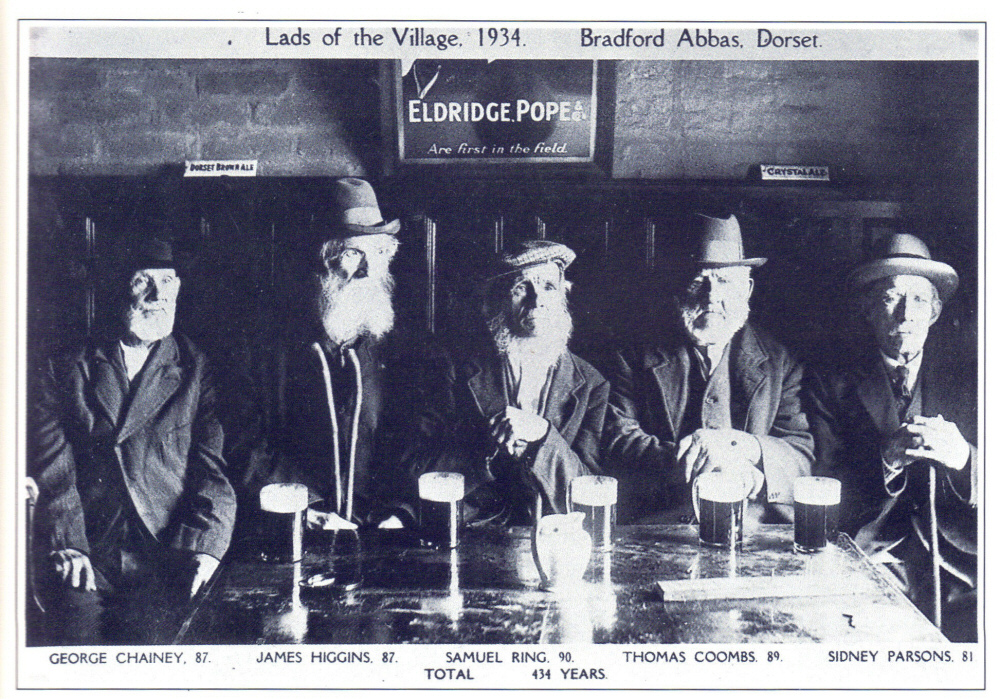“The search for the perfect pint should last a lifetime.”
— Michael “The Beer Hunter” Jackson
I’ve been told that in life two things are inevitable: death and taxes. I’d like to submit a third for (dis)approval, this being “generational discord.”
Italy springs to mind. During the 1980s, Italy became a big growth market for customarily bland pan-European golden lagers, whether brewed inside the country by a handful of breweries that controlled market share domestically, or coming from elsewhere.
This spurt was attributed to youthful Italian beer drinkers, who were said to be consciously rejecting the wine-drinking ethos of their elders. At the time, it struck me as the essence of counter-productivity; why swap a local Brunello or Pecorino for the forever insipid Stella Artois?
But that’s the way it works, doesn’t it? The entire point of youth’s intrinsic rebelliousness is to be different from the status quo – not so much to get down and dirty under the hood and reform the entirety of the established order, but to be performative in a visually arresting way that symbolizes differences.
This isn’t to say new generations don’t eventually make changes; they do, although the process usually starts with flouting norms, eschewing rules and disdaining precepts – then adding them back later, once enhanced economic clout demands re-codifying (and preserving) the very norms originally considered unnecessary.
In Italy, it took 10 to 15 years until two “new generation” advocates collided: the slow food movement and small-scale (“artisanal,” if you must) brewing. Synthesis was the result, with the brewers (numbering more than 1,000 in 2024) producing a plethora of ales incorporating herbs, spices, fruit, grapes and other unconventional ingredients – and, in the case of Italian pilsner, suggesting a whole new way to think about fermenting and hopping lagers.
My experiences with these Italian beers is admittedly slight, although invariably the examples I’ve tasted have been balanced and measured, with ample olfactory evidence of thoughtful intent, almost as if a brewer were to be graded on fidelity to a work ethic, replicable competence and subtle virtues in formulating recipes rather than merely super-sizing this or touting the hoppiest, sourest or most alcoholic that.
At this juncture you might be flushed: “But Roger, isn’t American ‘craft’ brewing currently overwhelmed by just such a tsunami of ingredients? Aren’t we infusing countless innocent, defenseless batches of Kolsch with everything from dill pickles and cotton candy to tikka masala and whale blubber cured with coal briquettes salvaged from the wreck of the Titanic?”
Yes, we are. Envelopes are pushed, and the next previously unimaginable combination of atrocious flavors is hailed as the best ever (at least since yesterday). Everyone excitedly drinks a single can or pour, enough to record today’s train wreck at untapped, all the while quietly recognizing that they won’t dare subject themselves to it a second time, and voila!
The next Instagram-pleasing, TikTok-influencing future drain-pour comes barreling utterly blindfolded down the information superhighway. Captain Crunch Tequila Barrel Aged Imperial Cream Ale, we hardly knew ye.
I don’t possess a scientific study “proving” any of this. I’m also not “blaming” the nation’s beer-drinking youth, apart from reaffirming that the cartoon character Pogo was absolutely right, and in America “We have met the enemy, and he is us,” a verdict that is not at all generationally specific.
It remains that aspects of the preceding certainly are generational, reflecting different ways of assimilating and using information, abetted in ways we still cannot possibly understand by the relatively recent electronic connectedness of the modern world. Growing up with a land line and rabbit ears on the television isn’t the same as having an iPhone and endless streaming, and so on.
What I do understand is that if the beer “divide” is a generational battle, then it’s one I’m destined to lose, just as surely as the fuddy-duddies tossing Beatles vinyl into a bonfire down Mississippi way lost back when I was just a kid.
But one thing someone older possesses irrefutably that someone younger doesn’t is having lived long enough to see both sides of “young versus old.” As such, the chasm is never quite as wide as it might seem, and it is the ironclad obligation of both young and old to pursue their perspectives even if no one ever “wins.”
That’s because ideas result from an unceasing dialectic, with seeming resolution emerging from a clash of opposing ideas, only to clash again with the next opposite looming over the horizon.
—
Given this eternal dialectic, why do I praise young Italian brewers in the late 1990s and early 2000s for wonderful achievements in spicing beer with oregano, chamomile and heaven knows what else, but sneer at a young American brewer for doing exactly the same?
That’s a good question, and while the answer might not merit praise, I hope you’ll award me partial credit for deploying a public platform to grapple with it.
Certainly one’s own personality traits form a large part of any stance, whether addressing beer, politics, religion, or why The Who’s Quadrophenia is far preferable to anything some fellow called Ed Sheeran could ever hope to muster.
- I’m a Europhile, and customarily have rejected flag-waving American exceptionalist patriotism as a handy refuge for scoundrels.
- Being a Europhile completely informed my “good beer” upbringing, almost as if it were a language one learns to speak, and such that it remains my point of orientation about beer.
- I’ve consumed enough beer of all different sorts to float an aircraft carrier, but age has curtailed my intake for reasons I can’t entirely define, and yet accept. My palate favors subtlety with attendant artistic passion, as opposed to palate-wrecking knockout punches. Drunkenness no longer amuses me.
- Your grandmother’s recipe for Waldorf Salad was not intended for use as the basis for a kettle sour.
- As a human being, I tend to gravitate toward rock-bottom foundational essences and to abhor ephemeral sensationalism – say, are any of you interested in what’s real, as opposed to pretend? If so, spare me the Photoshop, damn it, but explain it to me in words.
- C’mon, go ahead. Don’t any of you read books, or appreciate humans who can actually sing without computerized assistance, or drink an unalloyed Helles without resorting to blue food coloring being unceremoniously dumped into it?
(You see, I get a bit testy at times, and things get out of control. Deep breath; insert pint of sessionable English Mild.)
—
Maybe if you’re half my age you feel this way too. Perhaps the real point of having this “young and old” discussion at the present time is my coming ever so slowly to the realization of exactly how I came to lose my most recent beer programming position in New Albany six months ago, and why I’m not longer marketable in beer at the tender age of 63.
The beer program I built and maintained most recently was openly and avowedly classicist (not “classist”), reflecting the preceding digressions and bullet points. It relied upon a large degree of stability, with lower-gravity flagship drafts positioned to encourage loyal return customers, and beer rotation in all areas restricted to a minimum. As a musical analogy, think of loyalty to the album as preferred format, as opposed to shuffling playlists.
It wasn’t a conscious generational decision to run the beer program this way, but rather the sum total of a lifetime of experience in trying to establish conditions for greater sales and return patronage.
As an example, I had ten taps, and generally poured only one IPA (others were available in cans). It was my observation that one dependable IPA, appealing to most IPA drinkers, would naturally concentrate most of the demand for IPA – and we’d sell it more regularly. My choice was Bell’s Two Hearted, and we sold quite a lot. Having had multiple IPAs on tap would have split demand, and the Two Hearted wholesale cost enabled a profit at a reasonable retail price point.
As I am beginning to understand, these choices I made in beer programming, while initially supported by management, came to be construed as favoring those horrible older customers – perhaps by the very nature of the beer programmer being an older person, too.
To the extent that older Americans in general prefer predictability, consistency and stability, and more importantly, possess disposable income sufficient to reward it, then I plead guilty and humbly apologize for pursuing tactics designed to please customers and earn profits.
In short, my chief shortcoming in management’s view seemed to be a recalcitrant elderly person’s inability and/or unwillingness to dumb down – to be erratic, unpredictable and spin-the-wheel edgy/short-attention-span, Instagrammable-enough to cater to a younger crowd.
And it is quite possible this insults both the younger crowd and me; after all, not all of them drank the less expensive mass-market pet shampoo. Still, I must concede that having once vigorously pursued a career in beer by disrespecting my own Miller/Bud/Coors sudsy dishwater elders, turnabout really is fair play.
And it is 100% accurate that Roger and cosplay don’t mix, and there I’ll make my stand.
—
Where do I go from here? I suppose it isn’t appreciably different from the plight of a highly skilled blacksmith contemplating the future in 1930 or thereabouts, and yet verily, we can’t know much of anything without first knowing ourselves.
I’m a slow learner and a late bloomer, and the only time in recorded history when I managed to anticipate a trend was some point around 1978 when I tasted a German-brewed Dunkel (dark) Lager purchased with a fake ID at Cut Rate Liquors in Jeffersonville, thinking to myself, “Wow, this certainly is different, and I do like it, and if all the adults are drinking those nasty light beers, maybe this is my thing.”
And so it proved to be, and yet it was sheer serendipity that becoming interested in German dark lager, English pale ale and Belgian Trappists intersected with a philosophy major, a history minor, and an all-consuming obsession with traveling in Europe; thus for the first and only time in my life I was among the first to board the bus, ahead of the curve that was about to lead to a revolution in beer and brewing. It was less about appearing different, and more about being something different.
Because I might have become a teacher had life broken differently, I proceeded to spend the better part of 40 years educating others about beer, which in truth most often involved telling them stories about what beer had meant to me. It was old-school, and my career in beer proved to be personalized performance art, not pedagogy (that’s the study of teaching methods and principles).
Yes, it’s true; things change. To me, a vile combination of institutionalized ageism and the insipid tyranny of current social trends seem likely to exclude me from beer business involvement, even if I could still offer deeper meaning and ultimate purpose to a draft lineup somewhere and suggest winning strategies for moving beer faster, although yes, I grasp your existential terror of seeing your establishment becomes knowledge-based.
Then what?
Well, I’m not dead yet, and the year’s taxes already have been paid.
Generational discord continues as it always has, and invariably will, and while it depresses me that sheer chronology is verifying what I spent most of my adult life seeking to deny – ageism is very real, and worse, now the excuse for ageism is feebly aesthetic rather than plausibly capitalistic – none of this has much to do with the nation’s youth, in the sense that they merely tend to ignore me, and that’s to be expected.
The fact remains that I’m by no means too old to continue teaching beer. The trick is finding eager students and a classroom, and of course the “Hip Hops” column is a handy expedient. A big part of the personal reeducation process is letting go of annoyances and other matters over which I’ve little ultimate control. Relaxation and acceptance haven’t always been easy defaults for me, but I’m trying.
I’m actually coming around to the view that my efforts might best be expended within the elder hostel to which I’ve been consigned.
Do you think maybe AARP might wish to add a beer education membership bonus?
Previously at “Hip Hops”:
Hip Hops: Get ready for the Rollin’ on the River Craft Beer Fest on Sat., June 8



















 Roger Baylor is an entrepreneur, educator, and innovator with
Roger Baylor is an entrepreneur, educator, and innovator with 


